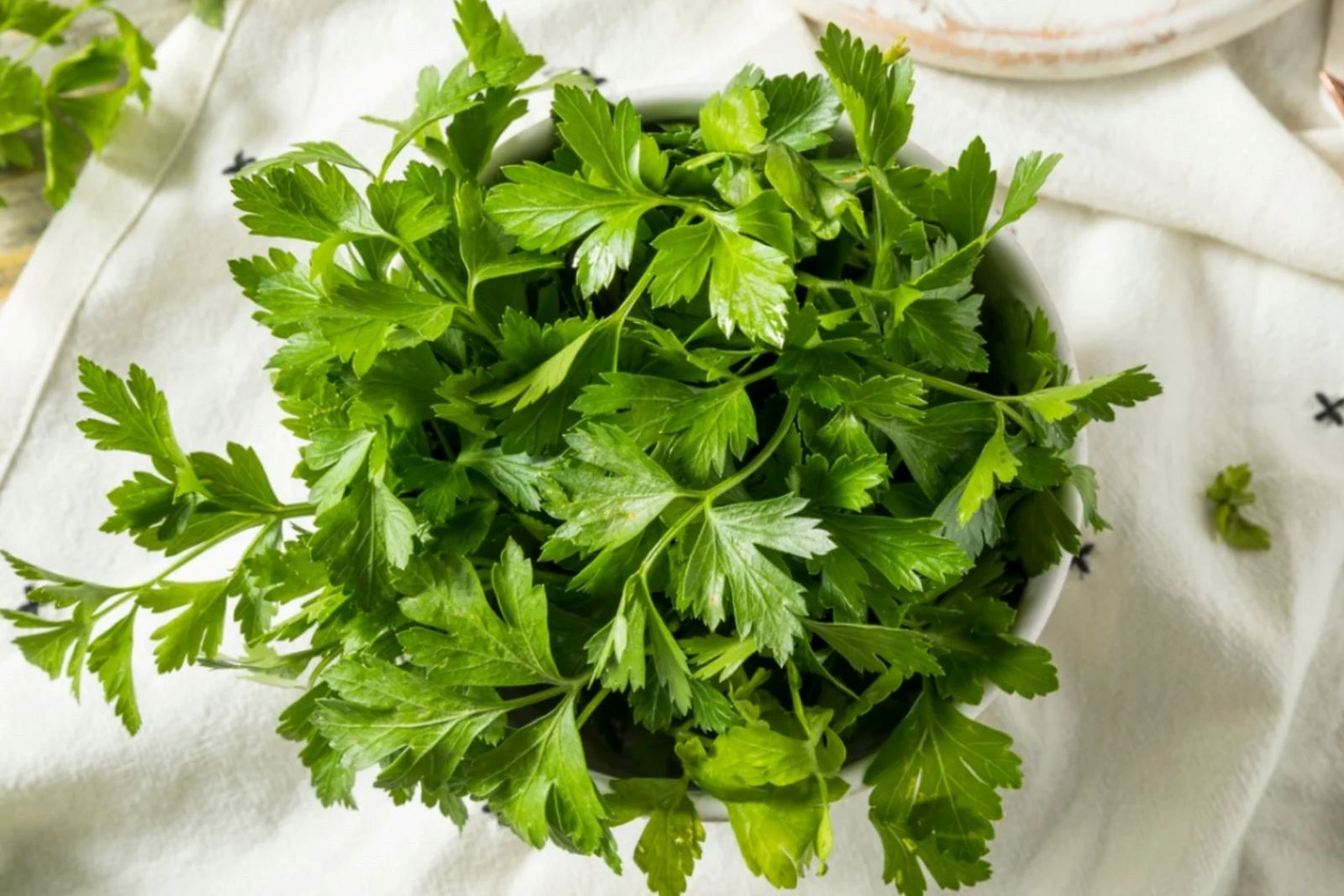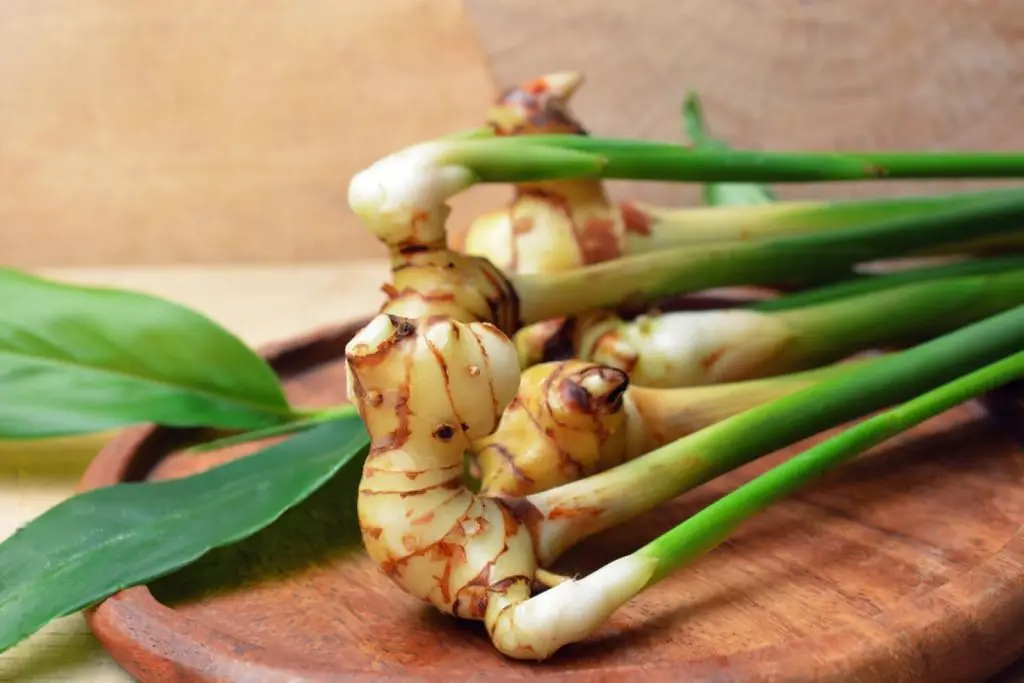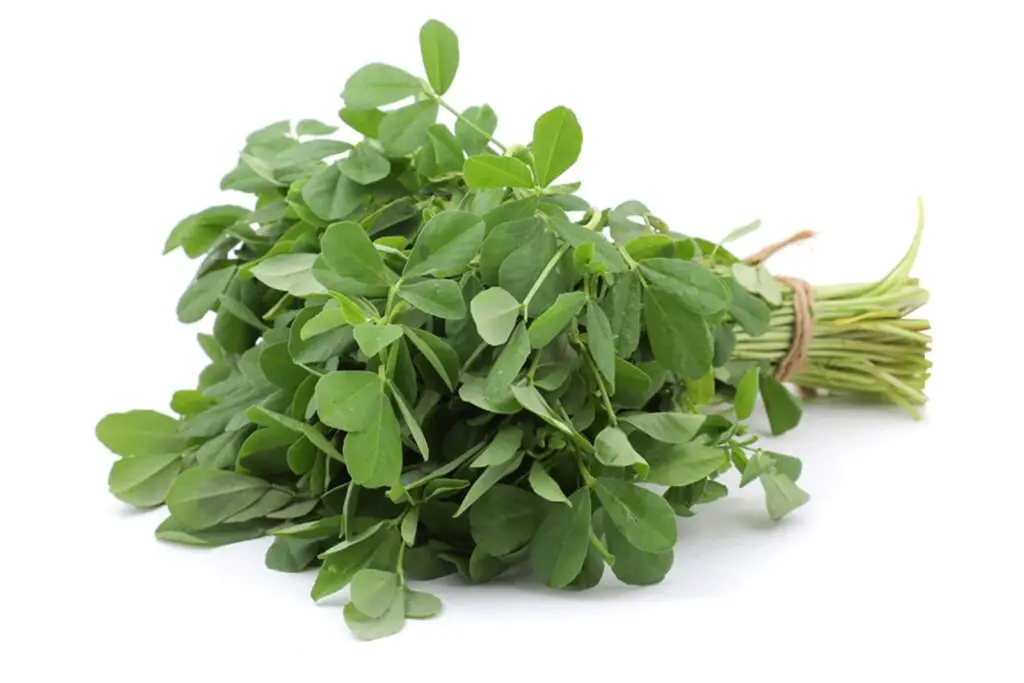
Parsley is a versatile herb used in countless culinary dishes to add a burst of fresh flavor. Whether you’re growing it in your garden or buying it from the store, there’s a good chance you’ll end up with more parsley than you can use immediately. Freezing parsley is an excellent way to preserve its vibrant green color and distinct taste for future use. In this article, we’ll walk you through the steps to freeze parsley properly, ensuring it maintains its flavor and aroma even when it’s not in season.
Here’s a comprehensive guide on how to freeze parsley:
Step 1: Select fresh parsley
Selecting fresh parsley is the crucial first step in ensuring that your frozen parsley retains its flavor and vibrant green color. The freshness of your parsley will directly impact the quality of the frozen herb, so it’s essential to choose wisely.
Fresh parsley is characterized by its vibrant green leaves, and these leaves should appear lively, not wilted or discolored. When inspecting parsley at the grocery store or farmer’s market, look for bunches with leaves that are perky, firm, and free from any signs of browning or yellowing. Wilted or discolored leaves are an indication that the parsley is past its prime and may not freeze well.
If you have the opportunity to harvest parsley from your own garden, it’s best to do so in the morning when the leaves are at their freshest. This is because parsley, like many herbs, tends to be more hydrated and crisp in the early hours of the day before the sun and heat have a chance to deplete its moisture. Harvesting in the morning ensures that you’re working with parsley at its peak freshness, which will translate into better results when freezing.
Step 2: Wash and prep the parsley
Washing and preparing parsley properly is a crucial step in the process of freezing it, as it ensures that the herb is clean, free from impurities, and ready to be preserved for future use.
- Gently wash the parsley under cold running water: Start by placing the fresh parsley under a gentle stream of cold running water. This step serves multiple purposes. First and foremost, it removes any dirt, dust, or residue that may have settled on the leaves during harvesting or transportation. Secondly, it helps to revive the parsley and make it crisp, enhancing its texture and flavor. Be gentle when rinsing to avoid bruising or damaging the delicate leaves.
- Pat it dry with paper towels or use a salad spinner: After rinsing, it’s essential to remove excess moisture from the parsley. Excess water can lead to freezer burn and diminish the quality of the frozen herb. You have two options for drying the parsley:
- Patting with paper towels: Lay the parsley on a clean kitchen towel or paper towels. Gently pat the leaves dry, being careful not to crush or bruise them. This method is suitable for smaller quantities of parsley.
- Using a salad spinner: If you’re working with a larger batch of parsley, a salad spinner can be a time-saving tool. Place the rinsed parsley in the spinner’s basket and spin it until most of the water droplets are removed. This method is efficient and helps preserve the parsley’s delicate structure.
- Remove the leaves from the stems: Once the parsley is clean and dry, it’s time to separate the leaves from the stems. The stems tend to be tougher and have a milder flavor than the leaves, so it’s preferable to remove them before freezing. To do this, hold the stem with one hand and run your other hand down the stem in the opposite direction of its growth. The leaves will easily come away from the stem, leaving you with the parsley leaves ready for the next steps in the freezing process.
Can I freeze parsley stems, or should I only freeze the leaves?
You can freeze both parsley leaves and stems, but keep in mind that stems are often tougher and have a milder flavor. Consider using stems for stocks or soups, while reserving the leaves for garnishes and recipes where a fresh parsley flavor is desired.
Step 3: Chop or leave whole
The decision to either freeze parsley leaves whole or chopped is a matter of personal preference and depends on how you plan to use the herb in your future recipes. Each method has its advantages, and your choice should align with your cooking habits and the specific dishes you intend to prepare.
Freeze parsley leaves whole:
- Preserves appearance: Keeping the parsley leaves whole helps maintain their visual appeal. If you plan to use parsley as a garnish or as a decorative element in dishes, freezing it whole ensures that it retains its vibrant green color and attractive appearance.
- Ideal for garnishes: Whole parsley leaves are perfect for garnishing salads, soups, or platters. They can be placed on dishes just before serving, adding a burst of freshness and color.
- Minimal preparation: Freezing parsley whole requires minimal preparation. You can simply wash, dry, and portion the leaves into containers for freezing, making it a convenient choice.
Chop parsley into smaller pieces:
- Convenient for cooking: Chopped parsley is more convenient for cooking because it’s prepped and ready to use. You can easily sprinkle chopped parsley into sauces, stews, or other dishes without the need for additional chopping.
- Distributes flavor: Chopping parsley releases its flavor more readily, ensuring that it’s evenly distributed throughout your dishes. This can be especially beneficial if you want the parsley to infuse its taste into a recipe.
- Space-saving: Chopped parsley takes up less space in your freezer, allowing you to store more in a limited freezer space.
To decide between these two methods, consider your cooking style and the types of recipes you frequently prepare. If you often use parsley as a finishing touch or garnish, freezing it whole might be your preference. However, if you frequently incorporate parsley into your cooking and want the convenience of prepped herbs, chopping parsley into smaller pieces is the way to go.
Step 4: Portion into freezer-safe containers
After washing, drying, and deciding whether to chop or leave your parsley leaves whole, the next step is to portion the parsley into freezer-safe containers. This step is essential for keeping your frozen parsley organized and easy to use in various recipes. Here’s how to go about it:
- Divide into portions: Start by determining how much parsley you typically use in your recipes. Parsley is often used in small quantities as a flavor enhancer or garnish, so portion it accordingly. You can choose to divide it into single-use portions or larger quantities, depending on your cooking needs.
- Select suitable containers: There are several options for freezer-safe containers:
- Ice cube trays: Ice cube trays are an excellent choice if you’ve chopped your parsley. Simply fill each compartment with chopped parsley, and if you’re using small cubes for future soups or stews, cover the parsley with water before freezing. Once frozen, you can pop out the parsley cubes as needed.
- Small containers or silicone molds: Small, airtight containers or silicone molds are ideal for both chopped and whole parsley. They allow you to portion the parsley into servings that match your recipe requirements.
- Sealable plastic bags: If you prefer flexibility in portion sizes, you can also use sealable plastic bags. Spread the chopped or whole parsley evenly in the bags, remove excess air, seal them tightly, and lay them flat in the freezer to save space.
- Label the containers: To avoid confusion in the future, label each container with the date of freezing. This ensures that you can keep track of how long the parsley has been stored and maintain its freshness.
- Consider blanching (optional): While blanching is not mandatory for freezing parsley, some people choose to blanch it for a few seconds in boiling water before freezing. Blanching can help preserve the parsley’s vibrant green color and extend its shelf life in the freezer. If you decide to blanch, be sure to cool the parsley quickly in an ice water bath before draining and packaging.
Step 5: Seal and label
Sealing and labeling your frozen parsley containers are vital steps to ensure the quality and organization of your stored herbs. Proper sealing helps prevent freezer burn, which can negatively affect the flavor and texture of your parsley, while labeling ensures that you can easily identify the contents and their freshness. Here’s why these steps are essential:
- Airtight sealing to prevent freezer burn:
- Freezer burn occurs when air comes into contact with frozen food, causing moisture loss and oxidation. It can result in off-flavors and a change in texture, making your parsley less appealing for culinary use.
- To prevent freezer burn, ensure that your chosen containers are airtight. This means the lids or seals on your containers should fit snugly and create a barrier that keeps air out. For sealable plastic bags, squeeze out as much air as possible before sealing.
- Labeling for identification and freshness tracking:
- Labeling your parsley containers is crucial for easy identification. When frozen, parsley may look similar to other herbs or ingredients, and without proper labeling, it can be challenging to discern what’s inside each container.
- Including the date of freezing on the label is essential for tracking the freshness of your parsley. While frozen herbs can stay good for several months, it’s best to use them within three to six months for optimal flavor and quality. By dating the containers, you can prioritize using older parsley first to minimize food waste.
- Recipe and quantity information (optional):
- You can also consider including additional information on the label, such as the quantity of parsley in each container or the specific recipes for which you intend to use it. This can be particularly helpful if you like to plan your meals in advance and want to streamline your cooking process.
Step 6: Store in the freezer
Storing your parsley containers in the freezer is the final step in the process of freezing parsley. Proper storage conditions are essential to maintain the herb’s quality, flavor, and freshness for extended periods. Here’s why this step is crucial:
- Maintaining an optimal freezing temperature:
- To preserve parsley effectively, it’s essential to store it at the right temperature. Set your freezer to 0°F (-18°C) or lower. This temperature range ensures that the parsley remains frozen solid, preventing any thawing and refreezing cycles that can degrade its texture and taste.
- Freezing at the proper temperature also inhibits the growth of microorganisms, such as bacteria and molds, that can spoil the herb.
- Maximizing shelf life and flavor:
- Frozen parsley can stay fresh for up to six months, but its flavor and quality are best within the first three months. Storing it properly at the recommended temperature ensures that it remains at its peak flavor throughout its shelf life.
- The longer parsley is stored, the more likely it is to experience freezer burn or develop off-flavors. Therefore, it’s advisable to use your frozen parsley within the three-month window to enjoy the best culinary results.
Other related questions
How do I defrost parsley?
To defrost parsley, remove the container from the freezer and place it in the refrigerator for several hours or overnight. Alternatively, you can gently microwave it in short intervals at a low setting until it softens, but be cautious to avoid cooking it. After defrosting, use the parsley immediately in your recipes to maintain its freshness and flavor.
Can I refreeze parsley?
It is generally not recommended to refreeze parsley once it has been thawed, as the herb’s quality can deteriorate. Repeated freezing and thawing can lead to texture and flavor changes, reducing its culinary appeal. To minimize waste, it’s best to thaw only the amount of parsley you plan to use in a single cooking session and avoid refreezing any leftovers.
How do I know if the parsley has gone bad after being frozen?
To determine if frozen parsley has gone bad, inspect its color, texture, and aroma. If the parsley has developed a dull or brownish color, a mushy or slimy texture, or an off-putting odor, it is likely spoiled and should not be used. Additionally, taste a small portion; if it has an unpleasant or rancid flavor, discard it to ensure food safety and maintain the quality of your dishes.
Can I use frozen parsley in recipes that call for fresh parsley?
Yes, you can substitute frozen parsley for fresh in most recipes. However, keep in mind that the texture may be softer after freezing, so it’s ideal for dishes where texture is less critical, such as soups, stews, sauces, and casseroles.
Can I freeze parsley in olive oil or other liquids for convenient use?
Yes, you can freeze parsley in olive oil or other liquids to create herb-infused cubes. This can be a convenient way to add flavor to your dishes, but be cautious about the potential for freezer burn if the liquid isn’t properly sealed.
Is it possible to freeze parsley with other herbs, like basil or cilantro?
Yes, it is possible to freeze parsley with other herbs such as basil or cilantro. This can be a convenient way to create herb blends for future use in various recipes. Ensure that all herbs are clean, dry, and properly portioned before combining them in a single container for freezing.
What dishes are best suited for using frozen parsley?
Frozen parsley is versatile and can be used in a wide range of dishes, including soups, stews, sauces, casseroles, and pasta dishes. It can also be used as a garnish for salads, meats, and seafood. Its convenience makes it a valuable addition to any recipe where fresh parsley flavor and appearance are desired.
Can I use frozen parsley as a garnish for my dishes, or does it lose its appearance after freezing?
You can use frozen parsley as a garnish for your dishes. While its texture may soften slightly after freezing, its vibrant green color and visual appeal can be preserved when sprinkled on hot foods just before serving. This makes it a suitable garnish for salads, soups, entrees, and other culinary creations.
Is there any difference in freezing flat-leaf parsley (Italian parsley) compared to curly-leaf parsley?
There is generally no significant difference in freezing flat-leaf parsley (Italian parsley) compared to curly-leaf parsley. Both varieties can be frozen using the same methods and techniques outlined in this guide. The freezing and thawing processes for these two types of parsley are similar, and they can be used interchangeably in most recipes without noticeable variations in flavor or quality.








